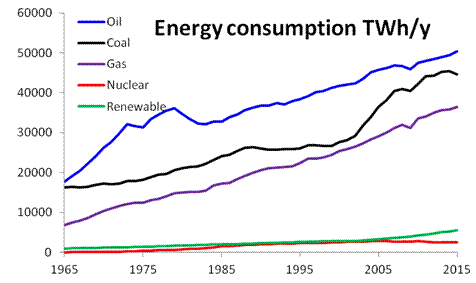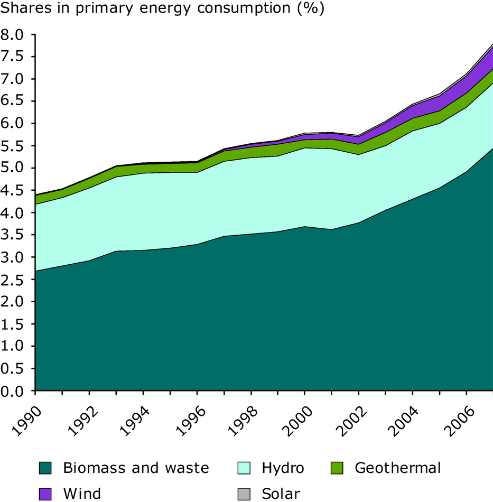Difference between revisions of "Category:Heidelberg:ITRE I"
m |
|||
| (2 intermediate revisions by the same user not shown) | |||
| Line 40: | Line 40: | ||
The New York Times (2011) <ref>http://www.nytimes.com/2011/05/20/world/asia/20gorges.html</ref> writes that 1,4 million individuals had to move due to the three gorges dam being built, which resulted in the rising of water. This is an example of social friction that occurs when the decision is made to transition from fossil fuels to renewable energy sources. Disruption of lives is almost inevitable when transitioning, might it be due to noise, landscape pollution or more serious and pressing issues springing from the societal disruption caused by renewable energy infrastructure. | The New York Times (2011) <ref>http://www.nytimes.com/2011/05/20/world/asia/20gorges.html</ref> writes that 1,4 million individuals had to move due to the three gorges dam being built, which resulted in the rising of water. This is an example of social friction that occurs when the decision is made to transition from fossil fuels to renewable energy sources. Disruption of lives is almost inevitable when transitioning, might it be due to noise, landscape pollution or more serious and pressing issues springing from the societal disruption caused by renewable energy infrastructure. | ||
| − | == | + | == References == |
| − | |||
| − | |||
| − | |||
| − | |||
| − | |||
Latest revision as of 21:52, 4 July 2017
| “ | Renewables becoming mainstream: What effective and economically efficient policies should the EU and its Member States prioritise in order to accelerate the integration of renewable electricity, heating and transport? | ” |

The climate of the planet we call home is changing. The climate has been changing ever since the earth formed [1]. However, this period of climate change is different. Due to the fact that humans have been burning fossil fuels at a rapid rate, the levels of, amongst other pollutants, CO2 has increased drastically since the industrial revolution [2]. Integration of renewable energy into the European energy grid is essential in the transition from energy generation using fossil fuels towards renewables. Several facts play a role in the stalling implementation of renewable energy sources, ranging from economic, social and technical objections and challenges.
Stopping the detrimental effects of human-caused climate change is essential for the very existence of humankind and the planet as a whole [3]. The inhabitants of low-lying countries (e.g. Bangladesh, Vietnam and The Netherlands) have to live with the ever increasing danger of the rising seas. But not only low-lying countries face the imminent threat of climate change [4]. Climate change results in droughts, extreme weather and lower crop yields, all due to the ever-increasing burning of fossil fuels and emission of pollutants by humans [5]. It is essential to maintain the liveability of our planet, for humans and the many vulnerable species of animals and plants that provide the basis of ecosystems and our agriculture [6] [7]. The consistent increase of greenhouse gas emission [8] can only be stopped by human intervention, utilising legislation and international treaties in order to reach various goals concerning global warming. The very livelihood of all that inhabits our planet is at stake, making this issue very impending and pressing to solve on an international basis.
Contents
Key conflicts
There are many viable ways to combat climate change, many of which are centralised in the ways we use our energy. Nowadays most of our energy is obtained from oil and other fossil fuels [9]. Despite the threat that climate change and its detrimental effects pose to us, many conflicts have sprung up that make the energy transition from fossil fuels towards renewable energy sources more difficult.
Sustainability vs. competitiveness
Fossil fuels have been the main suppliers of our energy since the dawn of the industrial revolution. The initial costs of investing in renewable energy sources over the already existing fossil fuel facilities are very high. A high investment is necessary in order to see profits from renewable energy. This makes renewables less attractive for investors, as corporations generally attempt to make as much profit as possible. Another facet to this issue is the immaturity of renewable energy technology. Fossil fuels have been a major part of the energy provision and renewable energy is relatively still in its infancy [10].
Political barriers
Climate change denialism is another major issue preventing the integration of renewable energy into the supply of heat, transport and household and industrial use. A lack of political incentive to take action for the integration of renewable energy is detrimental to the goal of reaching the Paris Agreement and the 2020 climate and energy package. A few examples of politicians and political parties denying climate change:
- Václav Klaus, former president of the Czech Republic [11]
- Geert Wilders, leader of the Dutch Freedom Party (PVV) [12]
- Democratic Unionist Party (DUP) [13]
Both national and European legislation is necessary in order to provide a fertile investment climate for corporations to invest not just in affairs that are profitable, but are also sustainable in the long term. Heavily intertwined with climate denialism in politics is the fossil fuel lobby. For instance, Royal Dutch Shell is the sixth biggest lobbyist in Brussels, writes the Guardian (2015) [14].
Irregularity of supply
The weather can vary from day to day, sometimes changing from sunny to overcast within mere hours. This makes it very difficult to rely on a single renewable energy source, the supply may take a downturn whilst the demand remains high. This poses a threat to the reliability of renewable energy and its supply. A solution can be sought in having back-up systems based on fossil fuels or finding a mix of (renewable) energy sources which can make for a steady supply of energy, even on cloudy days without too much wind. However, the advancement of technology may provide us with ways to supply all of our energy using renewable energy [15] [16]. Advancements in technology when it comes to storage of excess energy is another opportunity in improving the reliability of renewables. Storage of excess energy, particularly during periods of grid overload, can make the energy system more efficient.
Social objections
NIMBY
| “ | Connotes the unwillingness of individuals to accept the construction of large-scale projects by corporations or governmental entities nearby, which might affect their quality of life and the value of their property. | ” |
Environmental impact
Renewable energy sources still have some environmental impact, centered around the materials and production processes that are involved in the manufacturing of said renewables. Of course, renewable energy sources emit far less pollutants in the long term, but the initial investment and carbon footprint of renewable energy sources remains a burden on the efficiency of clean power sources. Renewable energy sources, most of all dams and windmills can be harmful for the wellbeing of fish and birds, respectively. This is an inherent risk linked to infrastructure of this sort.
Disruption of lives
The New York Times (2011) [18] writes that 1,4 million individuals had to move due to the three gorges dam being built, which resulted in the rising of water. This is an example of social friction that occurs when the decision is made to transition from fossil fuels to renewable energy sources. Disruption of lives is almost inevitable when transitioning, might it be due to noise, landscape pollution or more serious and pressing issues springing from the societal disruption caused by renewable energy infrastructure.
References
- ↑ http://www.bbc.com/news/science-environment-24021772
- ↑ http://www.ucsusa.org/global_warming/science_and_impacts/science/human-contribution-to-gw-faq.html#.WT6dbROGORt
- ↑ https://www.wwf.org.uk/updates/effects-climate-change
- ↑ https://weather.com/science/environment/news/20-countries-most-risk-sea-level-rise-20140924
- ↑ http://www.bbc.co.uk/schools/gcsebitesize/geography/climate_change/describing_climatic_trends_rev3.shtml
- ↑ https://www.theguardian.com/environment/2017/jan/19/critical-10-species-at-risk-climate-change-endangered-world
- ↑ http://bioenv.gu.se/digitalAssets/1432/1432197_fantahun.pdf
- ↑ https://climate.nasa.gov/climate_resources/24/
- ↑ https://en.wikipedia.org/wiki/World_energy_consumption
- ↑ http://greenecon.net/understanding-the-cost-of-solar-energy/energy_economics.html
- ↑ https://www.theguardian.com/environment/2009/mar/09/climate-change-deniers
- ↑ http://www.independent.co.uk/environment/green-living/how-green-is-holland-from-carbon-emissions-to-climate-change-10511649.html
- ↑ http://www.independent.co.uk/news/uk/politics/dup-climate-change-denial-hung-parliament-election-results-trump-a7781681.html
- ↑ https://www.theguardian.com/environment/2015/apr/27/shell-lobbied-to-undermine-eu-renewables-targets-documents-reveal
- ↑ http://www.vanadiumcorp.com/news/blog/168-flow-battery-could-smooth-irregular-wind-and-solar-energy-supply
- ↑ https://corporate.vattenfall.com/about-energy/renewable-energy-sources/
- ↑ https://www.britannica.com/topic/Not-in-My-Backyard-Phenomenon
- ↑ http://www.nytimes.com/2011/05/20/world/asia/20gorges.html
Pages in category "Heidelberg:ITRE I"
The following 3 pages are in this category, out of 3 total.
